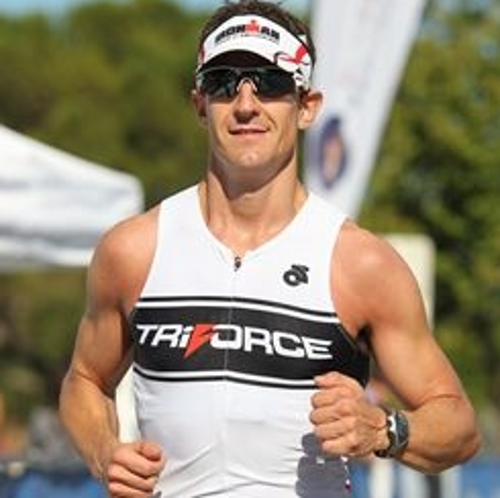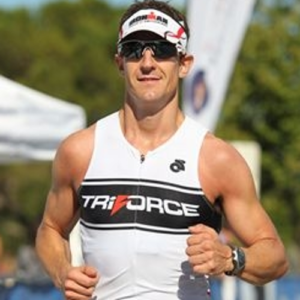Here at TriForce we believe your triathlon training plan should be customized factors like:
- your current fitness
- your goal races
- time available to train on weekdays vs. weekends
- your athlete history / level in each of the 3 sports
- your injury history
- and your personal robustness
A canned training plan (or a coach with a one size fits all philosophy) can ignore some of these factors, which can set you up to fail. Today we’ll talk about robustness.
Are You a Robust Triathlete?
Robust:
Bouncing back and recovering quickly from stress, training and races. It’s also about how often you get sick, injured or have extended “bad patches” in your training of fatigue or poor performance.
Your physical robustness (or we might call it resilience) and your ability to bounce back and recover is a critical factor in setting up your training. If you or your coach are not customizing around your person level of robustness then you are setting yourself up to fail.
I used to coach Rob Gray– his legendary resilience and ability to bounce back quickly is the big reason he was Ultraman World Champion. Coaching Rob quickly taught me that you can’t coach highly robust athletes like a “regular” athlete or they won’t come close to reaching their potential.
Which Category Triathlete Are You: High, Low, or Average Robustness?
While we can improve our robustness by working on our foundation for adaption, (sleep, nutrition, etc) some of us are less resilient than others. Look back at your training logs.
Which of the following describes you?
Highly Robust Triathlete
- You are the type of person who usually feels almost completely recovered a week after an Ironman or marathon.
- When you look at your history you see you’ve done plenty of big training and virtually always bounce back pretty quickly and rarely have “bad patches” of lousy training that last more than a few days.
- You usually “get away with” breaking training rules (ramping very quickly, stacking hard days close together, going a bit too hard on easy days, etc.).
Low Robustness Triathlete
- Multiple times through the year you have “bad patches” of training that can last as long as 1-2+ weeks where it feels like you can’t train your way out of a paper bag.
- When training at a solid level you have a tendency to have some big swings of low motivation and low energy.
- You might have a tendency to get sick or injured.
- If you jump into training too soon after a race you might feel OK but find your performance stays poor for awhile.
- once you hit a peak and are kicking ass you often find it doesn’t last long and you “peter out” (vs. high resilience athletes who tend to be able to stay near that peak level for a long time).
Average Robustness
- You are in between the 2 extremes.
- You bounce back from races and hard training in an “average” way. E.g. you probably feel 90% recovered a week after an Ironman 70.3 and 80% recovered 2 weeks after an Ironman.
- You might get a tired patch here and there but 1 or 2 easier days (or a planned recovery week) typically gets you back on track quickly.
We won’t go into details about how to coach and average resilience athlete– that’s just “regular” coaching 🙂
(Self) Coaching for the High Robustness Triathlete
Highly robust athletes are relatively rare. I’m coaching 2 right now and they have both made BIG gains (Kona qualifying multiple times in one case, and going from middle of the pack to top 10 at Ironman and 70.3 races in the other case). I’ll keep this short since coaching high resilience athletes is much less complicated than coaching low resilience athletes. High resilient athletes are fun to coach because there is a much much wider margin of error. These athletes can handle more load, more ramp and more challenges in general. If you train them like a low resilience athletes (or average athletes) you are holding them back. They can and should do more (and they usually WANT to do more). Don’t hold this athlete back too much but do channel their energy intelligently. And don’t get complacent- just because they have gotten away with breaking the rules over and over again in the past (e.g. jumping from 20 mile to 40 miles per week of running with no problems) doesn’t mean that they won’t get hurt this time. No athlete is invincible.
(Self) Coaching for the Low Robustness Triathlete
Low robustness triathletes can’t be coached the same way as highly resilient triathletes (or we will crash and burn), but we CAN be fast. I’m a low robustness triathlete (susceptible to extended bad patches in training that will go on until I take a relatively long rest unless I’m very careful), but I’ve qualified for Kona almost every year since 2010 and I’ve won my age group at a couple of Ironman races. Pete Jacobs was a notoriously low resilience triathlete for a professional, but he won the Ironman Worlds Championship at Kona. Coaching a low robustness triathlete to get super fit (e.g. qualifying for Ironman Kona World Championship) is, to paraphrase Joe Friel, “like turning a paper cup inside out without ripping it. It can be done but you need to be careful!”
TriForce rule #1 is consistency and if we are frequently dealing with bad patches, fatigue, injury or sickness then we can’t stay consistent and get fast. The name of the game for low resilience athletes is PREVENTING problems (deep fatigue, injury, etc).
A handful of guidelines for low robustness athletes:
- Easy days must be kept easy! If your training plan or coach tells you to keep your heart rate below a certain level, DO IT! You might feel like you CAN train harder, but these easy days are a chance for your body (including your endocrine system, which is key for resilience) to bounce back and recharge which will prevent bad patches over time. Stephen Seiler (the father of “polarized training” theory) says that anything above your aerobic threshold (around 30 beats below your anaerobic threshold) can create much of the same stress response as hard training. That’s a “moderate” effort, but your body process it as stressful. A pile of stressful days might not fatigue you over a week or two, but if you keep doing it you are setting yourself up for a CRASH.
- Watch your ramp rate. Consider periods of “consolidation.” Low resilience athletes need to be careful with how quickly we ramp. Don’t break the rules (e.g. 10% volume increase rule in running). Consider planning periods of stable training and not ramping for several weeks — instead let your body show improvement by doing the same training, but having it feel easier and easier.
- No “hero” sessions. Be satisfied to keep hard days “in range” and back off if you don’t feel good. Don’t test yourself or push for bests in training. Be satisfied to complete the workout in the planned intensity range (or even a bit easier if you are tired). If you have a tendency to carry fatigue you will have days where your pace and power are relatively low– thats’ fine. It doesn’t mean you lost fitness– it just means you are fatigued. Don’t target some of the extreme sessions you might see high resilience athletes doing. You probably won’t bounce back from a 30x 1k run session. Save the testing for race day.
- Underload Yourself. Don’t overload your plan with “quality” sessions. Workout Spacing is Key. “Stressful” days need to be spaced out well. For some low resilience athletes one intervals type workout + a long workout might be all the “stressful” sessions you can absorb on a regular weekly basis for a sport. That’s fine, build your week around those sessions and keep the rest of your workouts relaxed and low stress. If you need to change your plan around it’s better to skip a workout or change it to an easier workout than to stack back to back hard sessions. Better to schedule a bit less and never have a bad week versus pushing the limits and suffering a bad patch that might last a week or two.
- Pay Attention to What Has Caused You Problems in the Past. Does fast running on the track injure or deeply fatigue you? Never go back to the track again (it’s overrated). See what happens if you do your intensity on hills instead. Do you get fatigued from short hard reps? Or from high volume? Does a certain workout smoke you? For low resilience athletes the name of the game is avoiding bad patches so if something causes problems for you– don’t do it!
- Take Recovery– both Proactive AND as Needed. Build recovery into your plan. For example, a pattern I love is a sold weekend of training, followed by keeping the run and bike intensity low on Monday and Tuesday to give the legs a break. Then we have solid run/bike workouts Wed and Thur followed by an easier legs day on Friday to recover before the weekend. (We schedule harder swims on easy legs days). That way we build recovery into the week and feel good for our harder workouts. For most athletes we won’t use “recovery weeks”, but low resilience athletes should consider them (an easy M-F every 3rd to 5th week). In addition to the planned recovery, be willing to take unplanned recovery if you feel a fatigue patch coming on. Better to skip one hard workout then to tip into deep fatigue followed by a lousy week or two of training.
Remember– your triathlon training plan should be customized factors your current fitness, goal races, time available to train on weekdays vs. weekends, athlete history and your personal robustness.




